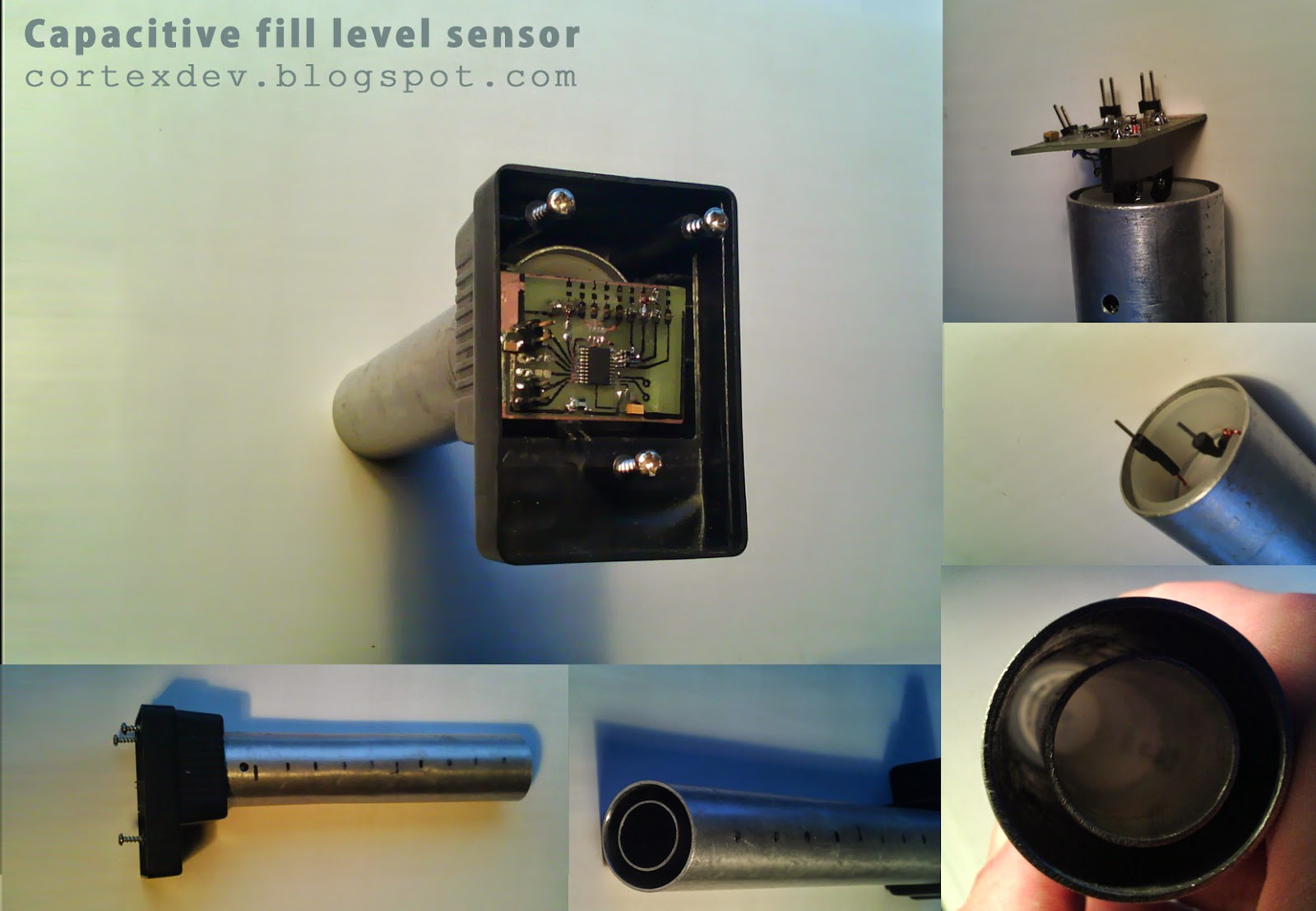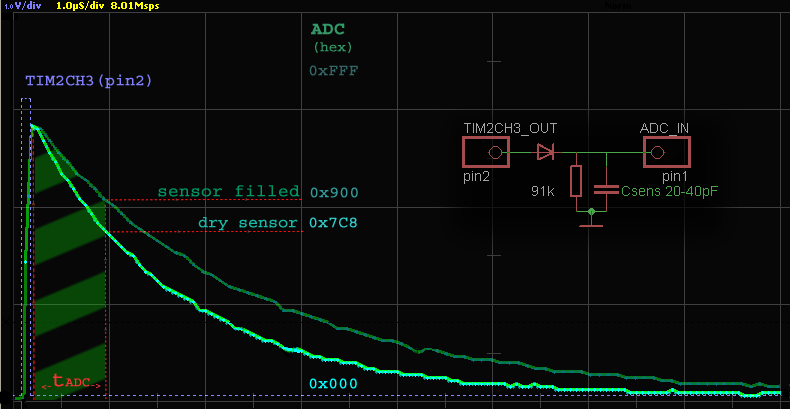First little terminology attribute - recently I re-read a lot of docs about Cortex ADC features, and have noticed that right word for ADC under event-chaining called "injected mode", a mode where the ADC conversion can be "injected" during the conversion of regular channels due to some trigger. Proper label added.
Why output on last project uses PWM mode instead of simple I/O?
I leave it not because I'm too lazy to change pin chart, at least not only for this reason. Main reason is optional possibility for slowed end of moving. It can be easy realized for simple DC motor by half-filled PWM output before "off" switch position. Or even by proportional law, depends on actual distance.
Why capacitive fluid level sensor uses some more complicated hardware, instead of famous cap-meter-with-arduino-uno?
Jon's idea simple and elegant, but aimed to table measurements. In industry one of plates usually grounded for shielding from external RF noises (and/or to prevent leaking internal noises outside). But Jon's method can be suitable for Cortex chips also, with benefit of four times less input capacitance (7pF instead of 30pF in arduino uno ). And I already got some ideas in this field.
Is it possible to use such "naked" inputs and outputs in real life sensor design?
I suppose it's a bad idea. These simple schematics provided for educational purposes only, in real life I can recommend at least additional zener diodes and buffered output, especially if you intend to use sensor in places more important than light shutters.








